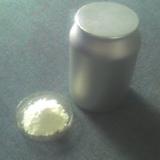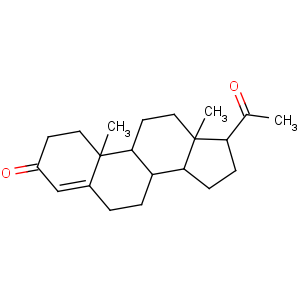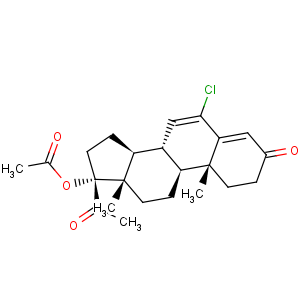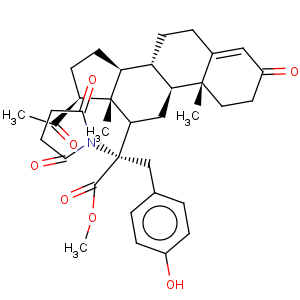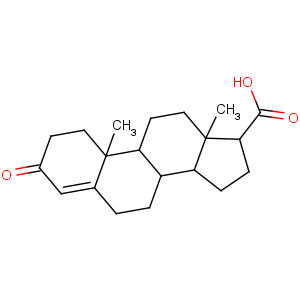Quick Details:
Progesterone
Synonyms: PROGESTERONE-WATER SOLUBLE; progestin; PROGESTERONE; PRIMOLUT;
CAS: 57-83-0
MF: C21H30O2
MW: 314.46
Assay:99%
Purity 98.0%~99.9%
Density:1.08 g/cm3
Melting Point:128-132 °C(lit.)
Boiling Point:447.2 °C at 760 mmHg
Flash Point:166.7 °C
EINECS: 200-350-6
solubility H2O: 25 mg/mL, may be clear to slightly hazy form powder
Stability: Stable. Incompatible with strong oxidizing agents.
Chemical Properties: Crystalline Powder
Storage:Progesterone should be Protected from Sunlight, Moisture and Heat .
Product Implementation Quality Standard: USP, EP, BP and IP.
Usage: Sterid hormone produced by the corpus luteum. Induces maturation and secretory activity of the uterine endothelium; suppresses ovulation. Progesterone is implicated in the etiology of breast cancer
Description:
Medroxyprogesterone acetate (INN, USAN, BAN), also known as 17α-hydroxy-6α-methylprogesterone acetate, and commonly abbreviated as MPA, is a steroidal progestin, a synthetic variant of the steroid hormone progesterone. It is used as acontraceptive, in hormone replacement therapy and for the treatment of endometriosis as well as several other indications.
MPA is a more potent derivative of its parent compound medroxyprogesterone (MP). While medroxyprogesterone is sometimes used as a synonym for medroxyprogesterone acetate, what is almost always being referred to is MPA and not MP. It is on the World Health Organization's List of Essential Medicines, a list of the most important medication needed in a basic health system.
Applications:
In females, the most common use of MPA is as an oral or depot-injected contraceptive and also as the progestin component of menopausal hormone replacement therapy to prevent endometrial hyperplasia and cancer. MPA is also used as a treatment forendometriosis, dysmenorrhea, and amenorrhea. MPA, along with other progestins were developed to allow the hormones to be taken orally, as progesterone (the hormone made by the human body) could not be taken orally before the process of micronization was developed.
In males, MPA has been used to control inappropriate sexual behavior to chemically castrate convicted sex offenders. MPA is an extremely effective contraceptive when used with relatively high doses to prevent ovulation. It has also been used to treat benign prostatic hyperplasia, as a palliative appetite stimulant for cancer patients, and at high doses (800 mg per day) to treat hormone-dependent cancers of primarily the breast, but also other types.
Though not used as a treatment for epilepsy, MPA reduces the frequency of seizures and does not interact with anti-epileptic medications. MPA does not interfere with blood clotting and appears to improve blood parameters for women with sickle cell anemia. Similarly, MPA does not appear to affect liver metabolism, and may improve primary biliary cirrhosis and chronic active hepatitis. Women taking MPA may experience spotting shortly after starting the medication but is not usually serious enough to require medical intervention. With longer use amenorrhoea can occur as can irregular menstruation which is a major source of dissatisfaction, though both can result in improvements with iron deficiency and risk of pelvic inflammatory disease and often do not result in discontinuing the medication. MPA is also prescribed in combination with an estrogen to prevent endometrial hyperplasia in post-menopausal women who are undergoing hormone replacement therapy.
MPA has also been prescribed in hormone replacement therapy for male-to-female transgender individuals due to its antiandrogen and progestogen effects.
Adverse effects
In females, the most common adverse effects are acne, changes in menstrual flow, drowsiness, and can cause birth defects if taken by pregnant women. Other common side effects include breast tenderness, increased facial hair, decreased scalp hair, difficulty falling or remaining asleep, stomach pain, and weight loss or gain.
The Women's Health Initiative investigated the use of MPA and conjugated equine estrogens compared to placebo. The study was prematurely terminated when previously unexpected risks were discovered, specifically the finding that though the all-cause mortality was not affected by the hormone therapy, the benefits of the hormone replacement therapy (reduced risk of hip fracture, colorectal and endometrial cancer and all other causes of death) were offset by increased risk of coronary heart disease, breast cancer, strokes and pulmonary embolism.
At high doses for the treatment of breast cancer, MPA can cause weight gain, worsen diabetes mellitus and edema (particularly of the face). Adverse effects peak at five weeks, and are reduced with lower doses. Less frequent effects may include thrombosis (though it is not clear if this is truly a risk, it can not be ruled out), painful urination, anxiety, headache, nausea and vomiting. When used to treat benign prostatic hyperplasia, more frequent complaints include reduced libido, impotence, reducedejaculate volume, and within three days, chemical castration. MPA may cause reduced bone density though this appears to be reversible to a normal level even after years of use. At extremely high doses (used to treat cancer, not for contraception) MPA may cause adrenal suppression and interfere with carbohydrate metabolism but does not causediabetes.
Fetuses exposed to progesterones have demonstrated higher rates of genital abnormalities, low birth weight, and increased ectopic pregnancy particularly when MPA is used as an injected form of long-term birth control. When used as a form of injected birth control, MPA can reduce fertility for as long as 10 months, taking longer for overweight or obese women. When combined with conjugated equine estrogens (Premarin), MPA has been associated with an increased risk of breast cancer, dementia andthrombus in the eye. In combination with estrogens in general, MPA may increase the risk of cardiovascular disease, with a stronger association when used by post-menopausal women also taking CEE. MPA is not recommended for use prior to menarche or before or during recovery from surgery. It was because of these unexpected interactions that the Women's Health Initiative study was ended early due the extra risks of hormone replacement therapy, producing a dramatic decrease in both new and renewal prescriptions for hormone therapy.
MPA is known to produce symptoms of depression, anxiety, and irritability in some patients.
Superiority
Estrogen is a female sex hormone, produced by the ovaries and placenta. Adrenal cortex also produced a few estrogen. Female children after puberty ovarian secretion of estrogen, start, in order to promote the vagina, uterus, fallopian tube and ovary itself development, at the same time caused menstrual endometrial hyperplasia. Estrogen can promote the subcutaneous fat accumulation, plump; hyperplasia of the breast, nipple, areola dark colors, and produce sexual desire; to promote the body sodium and water retention, bone calcium deposition
Permanent link: http://www.vvchem.com/sell/cas:57-83-0,3309100.html




